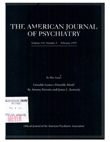Evidence for the independent familial transmission of attention deficit hyperactivity disorder and learning disabilities: results from a family genetic study
Abstract
OBJECTIVE: The purpose of the study was to clarify the relationship between attention deficit hyperactivity disorder and learning disabilities. METHOD: The authors assessed learning disabilities in a sample of 140 children with attention deficit hyperactivity disorder and in 120 normal comparison children. They also assessed a sample of the probands' 822 first-degree relatives. RESULTS: The risk for learning disabilities was highest among relatives of probands with both attention deficit hyperactivity disorder and learning disabilities. The two disorders did not cosegregate in families. There was nonrandom mating between spouses with attention deficit hyperactivity disorder and learning disabilities. CONCLUSIONS: The two disorders are transmitted independently in families, and their co-occurrence may be due to nonrandom mating. Attention deficit hyperactivity disorder is likely to be etiologically independent from learning disabilities.
Access content
To read the fulltext, please use one of the options below to sign in or purchase access.- Personal login
- Institutional Login
- Sign in via OpenAthens
- Register for access
-
Please login/register if you wish to pair your device and check access availability.
Not a subscriber?
PsychiatryOnline subscription options offer access to the DSM-5 library, books, journals, CME, and patient resources. This all-in-one virtual library provides psychiatrists and mental health professionals with key resources for diagnosis, treatment, research, and professional development.
Need more help? PsychiatryOnline Customer Service may be reached by emailing [email protected] or by calling 800-368-5777 (in the U.S.) or 703-907-7322 (outside the U.S.).



